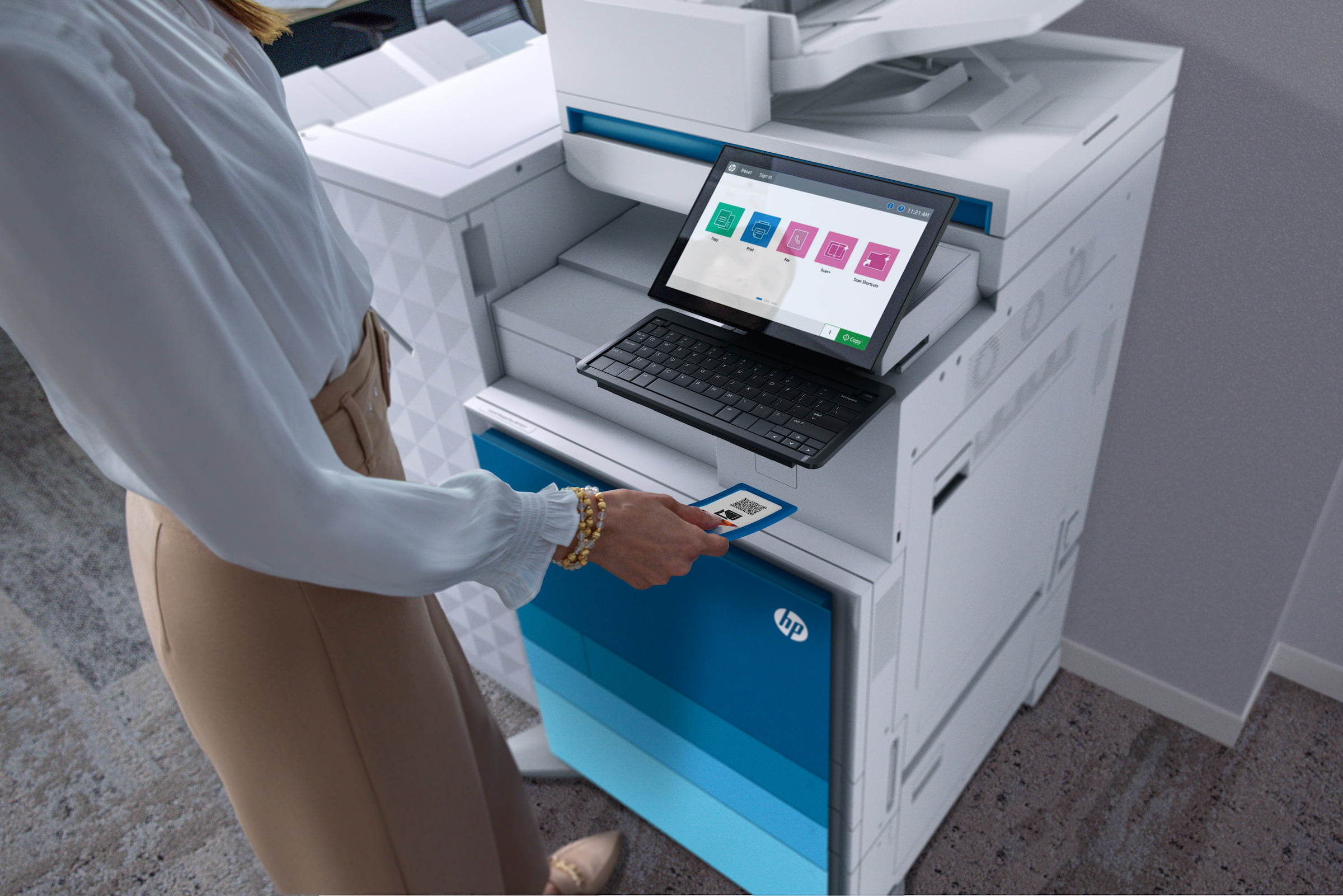
Automated Invoice Processing
Wave goodbye to the hours you used to spend rekeying invoice data into spreadsheets. Simply send the files you need processed and we’ll handle the extraction, standardisation, templating, and all the rest!
Processing invoices manually can be particularly time-consuming and inefficient. That’s why we’ve streamlined it into an automatic process.
Our fixed-price, pay-per-invoice Automatic Invoice Processing (AIP) service is very simple:
- Let us know your typical invoice volume and the output format needed.
- Drag & drop your files into our AIP portal.
- Receive your metadata, formatted for your finance system.
- Store the indexed images with us to meet HMRC retention compliance.
That’s it – no capital investment required, and absolutely no hidden fees.

How the AIP service works
Once we've received your files, we pass them through powerful Digital Capture software, which extracts essential metadata from your invoices such as supplier details, monetary values, dates, and line items. For your convenience, we then return it in a standardised format – saving your finance department the hassle of data entry with accuracy and efficiency.
Alternatively, you can aid your HMRC compliance and simplify your auditing processes by having your digital invoices stored on our secure Cloud-based records management system, which you can access any time on a read-only basis.
What is Invoice Processing?
Invoice processing is a mechanism that is used to ensure appropriate payments and an accurate general ledger, which is triggered when the Accounts Payable department receive an invoice. Inbound invoices may be delivered digitally or via post – and during the process, Accounts Payable are responsible for general ledger coding, validation, approval, compliance, and payment.
Why is Invoice Processing Important?
Since it's not directly tied to profit-generating outcomes, optimising invoice processing can often be overlooked. However, an invoice processing method that is repeatable and regularised promotes a culture of efficiency, reduces accounting errors, capitalises on early payment benefits, and enables further automation.
Why Automate?
Manual Invoice processing is:
- Time consuming, inefficient, and error-prone compared to digital solutions
- Designed to require unnecessary handling and re-keying
- Prone to friction and even loss when seeking physical approval
- Restrictive of your ability to use data in digital workflows.
Automated Invoice Processing, however:
- Increases speed, accuracy, security, and ROI of the Accounts Payable department
- Works with machine learning and AI technologies improves the process over time.
- Can be scaled without expending resources.
- Delivers economic returns by efficiently managing inputs, whereas scaling a manual process requires expending resources to grow the physical aspects.

What are the benefits of Automated Invoice Processing?
- Document control is a defining trait of management, and centralised access allows total system oversight, increasing confidence.
- Moreover, the flow of information and data is traceable, and users are accountable for their actions.
- Leave paper in the past. Automated Invoice Processing reduces reliance on paper to execute Accounts Payable tasks.
- No more duplication, wasted ink, or single-use paper - allowing you to commit to reducing your business’ carbon footprint.
- Take control of compliance by automatically documenting audit data.
- Data is shareable, so whether audits are being performed internally or externally by a third party, you can ensure transparency of information.
- Workplace preferences, like the ability to work remotely, are a deciding factor in staff acquisition and retention.
- By detaching workflows from a physical location, the flow of information is not affected by cultural shifts in workplace preferences.
- Digital Capture software extracts invoice data incredibly efficiently, automation redirects labour hours into profit generation.
- Once an invoice requires attention, users are notified. Reports track progress and identify bottlenecks, and react in real time to KPIs.
- Money is saved in labour costs, furthermore Automated Invoice Processing doesn’t require training to fulfil a complex role.
- Manual processing comes with the risk of error and loss. Fines for non-compliance, money sunk correcting errors, and the cost of reproducing lost documents can add up over time.
- Repeatedly capitalise on early payment benefits and build strong supplier relations.
- Realise returns to scale faster than physical processes.
- No costs sunk into infrastructure and training.
- Automated Invoice Processing handles the volume and complexity of scale faster, using no additional space.
- Digital expansion allows processes to grow independently alongside your business.
What are the steps of Automated Invoice Processing?
The initial step is to plan your KPIs and goals for implementing an Automated Invoice Processing System, and how you’re going to measure success.
• Consider the Cost
Will automation reduce the costs of AP operations? How do costs scale?
• Compliance
How are you going to ensure and prove compliance at every stage of invoice processing?
• Resources
Where are resources going to be redirected once automation is adopted? What are the inputs and outputs?
• Relationship
Are supplier relationships being improved? Are payments being made faster?
• Security
Is data secured and restrictable at every stage in the workflow?
Are your invoices already digital? Automation begins with digitsation, which can be performed by you or your AIP provider. Or, you could just drag and drop your already-digital files into online AIP portals.
Client self-service, inbox monitoring, or an Inbound Mail service are additional digital features that streamline invoice delivery.
- Digital Capture extracts data from your invoices and templates it to a format compatible with your financial system. To do this, the information you want to record needs to be standardised.
- Captured information can be exported into third party financial systems or managed from the AIP system interface.
Optimise Your Invoice Process
Sending your process, not your invoices, to a digital workplace specialist reduces costs associated with management and IT maintenance – in addition to the costs that would have been saved by automating invoice processing in house. An experienced Document Management partner can support integrations with other digital tools while providing ongoing access to support and security.
Ensuring optimisation at every stage is key to executing a successful automation of physical processes. By outlining KPI benchmarks, you can track the success of automation and make appropriate changes to maximise efficiency. Take a look at how to integrate automation in your AP department in our blog post: How to Process Invoices Automatically: 4 Steps for Success
How does Automated Invoice Processing work?
Invoice process automation harnesses Digital Capture software to extract and format invoice data. Extracted data is then used to complete AP functions and complete workflows.

Process Automation
Data Extraction
Digital Capture extracts and formats data for compatibility with financial payment systems – but sometimes, you need a human touch for novel and unique cases. Digital Capture operates to a confidence level, and when not 100% confident, a human validates that case a second time – which the software will record and learn from, increasing confidence for when it encounters the issue a second time.GL Coding
Digital Capture determines invoice types and uses this information to assign the general ledger code by cross-referencing with your CRM database.Three-Way Matching
Did you get what you ordered? Are you being appropriately charged? Does it match what you received? Three-way matching ensures appropriate payments are made by referencing purchase orders and delivery notes, with OCR matching invoices, purchase orders, and delivery notes for accuracy and peace of mind.
Workflow Automation
Approval
Invoices are routed for approval, notifying the approver that they are ready to be seen. Once approved, they are automatically moved onto the next stage in the workflow.Notification
Once an invoice is received, the workflow begins and automatic notifications are sent informing relevant team members that actions is required.Retention
Based on the information extracted, the system recognises how long the invoice must be archived based on GDPR legislation. Then notification can be sent once the legal destruction of the document is required.Workflow automation ensures that an organisation’s flow of invoice data is reliable, consistent, and compliant. It is not limited to the AP department and can integrate with company-wide tasks, such as HR and records management.
Things to Consider
Different features of an AIP service require a different budget, so choosing an appropriate solution requires consideration of the following metrics.
Digital Transformation
Automating invoice processing is just one element of digital transformation. AIP automates validation, pushes invoices into the financial system, and routes to other departments for approval and payment. It can also be a part of a more comprehensive, interdepartmental automation strategy.
Functionality is maximised when used with other digital enhancement tools, such as Document Management, vendor self-service, and a Digital Mailroom service.
AIP workflows remove the need for physical requests. Document Management systems improve the flow of information in the workplace by preventing the need for duplicates. Furthermore, digital information records its movements to form the audit trail, which generates reports that track KPIs.
AIP + Digital Mailroom
A Digital Mailroom service is one of the digital tools you should consider for AIP integration. When invoices are received, they are digitised, indexed, and fed into an automated invoice processing service – and can also be extended to include inbox monitoring, integrating all inbound invoices into Business Process Automation.

AIP+ Document Management
Document Management enables the centralisation and free flow of information – providing one point of access and source of truth for all records. Improving collaboration, compliance, and productivity. AIP is a natural extension of Document Management completing audit trails on invoices – since the more digitised your documents, the more you amplify your productivity and environmental benefits through your processes.

Our solutions are designed to scale with your business, amplify your benefits, and generate cost-efficiencies within your internal operations - since by outsourcing this service, you remove costs sunk into installing and maintaining AP software, while freeing staff time.
Get in touch for a free consultation with digital transformation experts by filling out the form below!
How We Can Help
To learn more, please fill out the contact form:
Latest insights
Keep up to date with all the latest in Managed Workplace Services.
By submitting this form, you acknowledge that you have read and understand the Apogee Privacy Statement.
Data Privacy Policy | Cookies Policy









































